The South-West Drought Hub provides links and access to the below dry season resources for growers, grower groups, and the broader agricultural community. This information will aid in their decision making to help manage those that are experiencing a dry season.
The Drought Hub has pulled these valuable resources together into one location for the livestock, grains and horticulture industries. These resources will be continuously updated on an as needs basis.

Long-term records show that our climate is becoming warmer and drier. This trend is expected to continue, with dry seasons likely to become more frequent over southern Western Australia.
The Department of Primary Industries and Regional Development (DPIRD) provides data and information on seasonal weather through its network of automatic weather stations and seasonal climate forecasts through the Statistical Climate Information system.
In dry years, the department provides information to assist growers and agribusiness to manage seasonal conditions and their consequences.
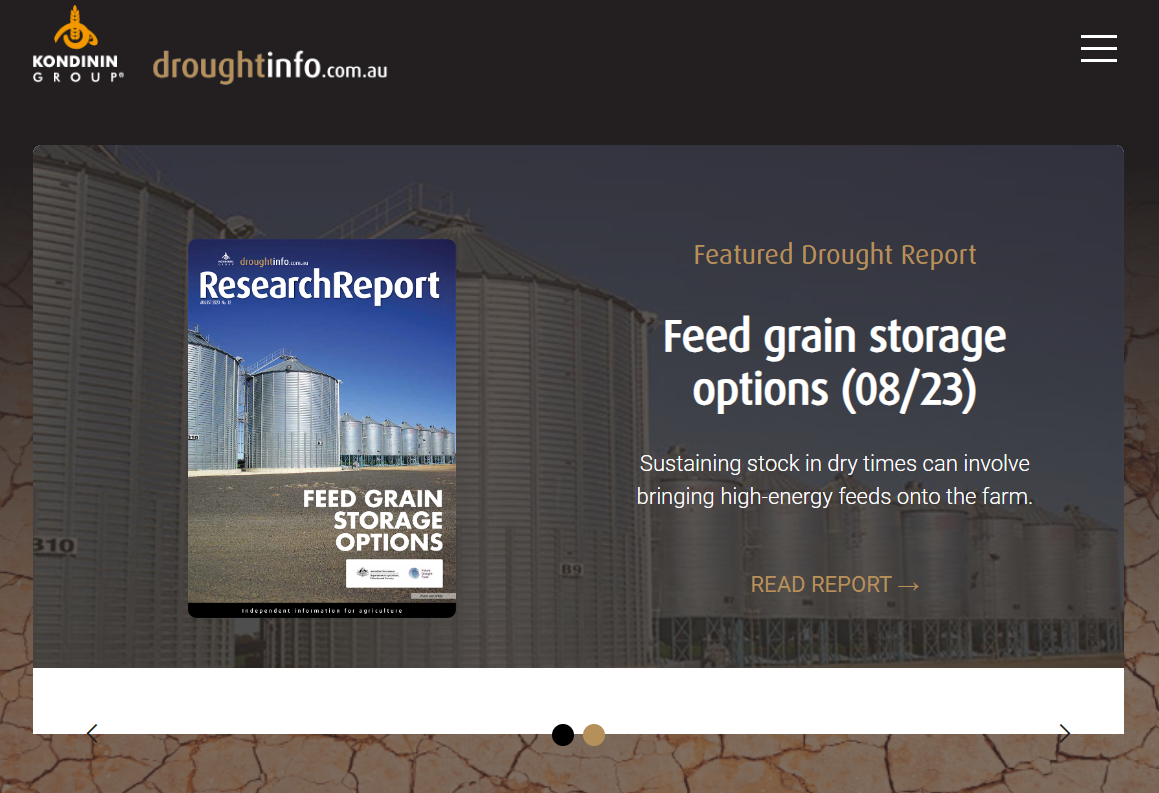 Peruse Kondinin Group’s extensive library of featured drought reports and other related articles here.
Peruse Kondinin Group’s extensive library of featured drought reports and other related articles here.
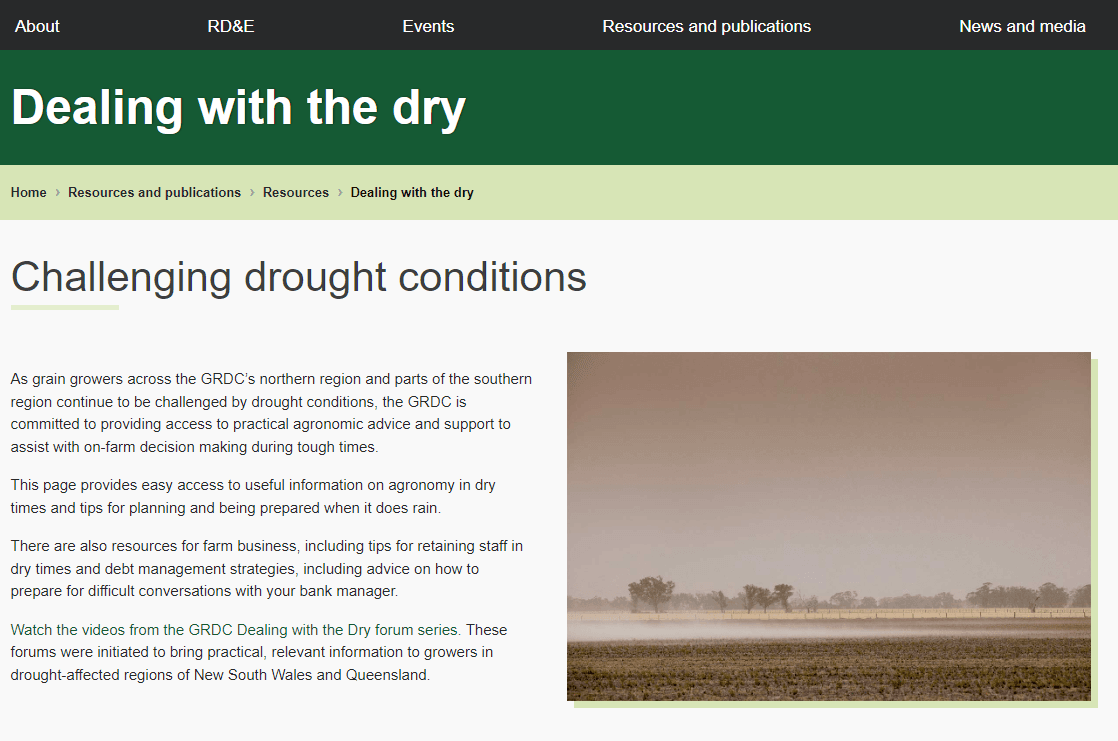
This Grains Research and Development Corporation (GRDC) page provides easy access to useful information on agronomy in dry times and tips for planning and being prepared when it does rain.
There are also resources for farm business, including tips for retaining staff in dry times and debt management strategies, including advice on how to prepare for difficult conversations with your bank manager.
Watch the videos from the GRDC Dealing with the Dry forum series. These forums were initiated to bring practical, relevant information to growers in drought-affected regions of New South Wales and Queensland.
Access the GRDC ‘Dealing with the dry’ webpage here.
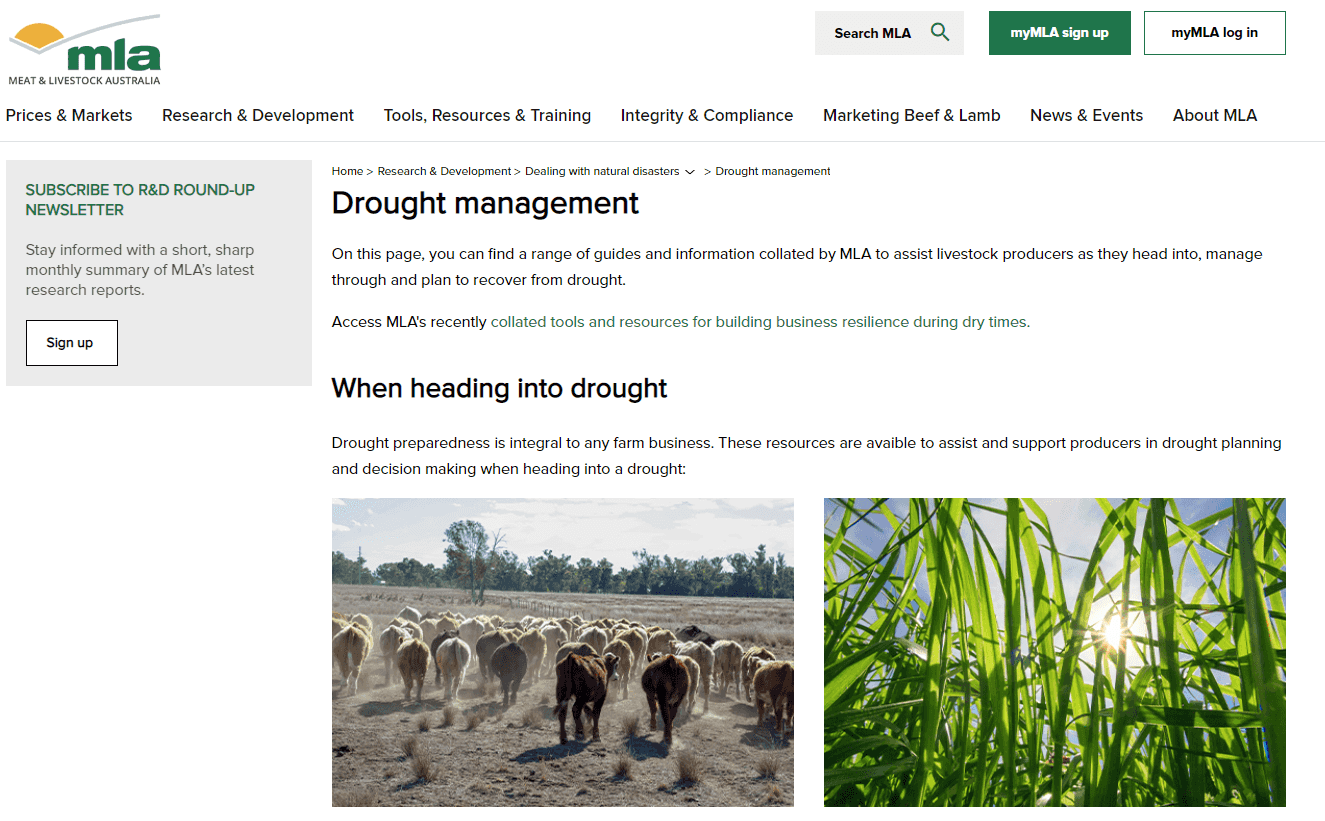
On this page, you can find a range of guides and information collated by MLA to assist livestock producers as they head into, manage through and plan to recover from drought.
Access MLA’s recently collated tools and resources for building business resilience during dry times.
Visit the MLA Drought management webpage.
MLA has further resources to help producers prepare for and mitigate the impact of dry conditions on their Dry ready hub webpage.
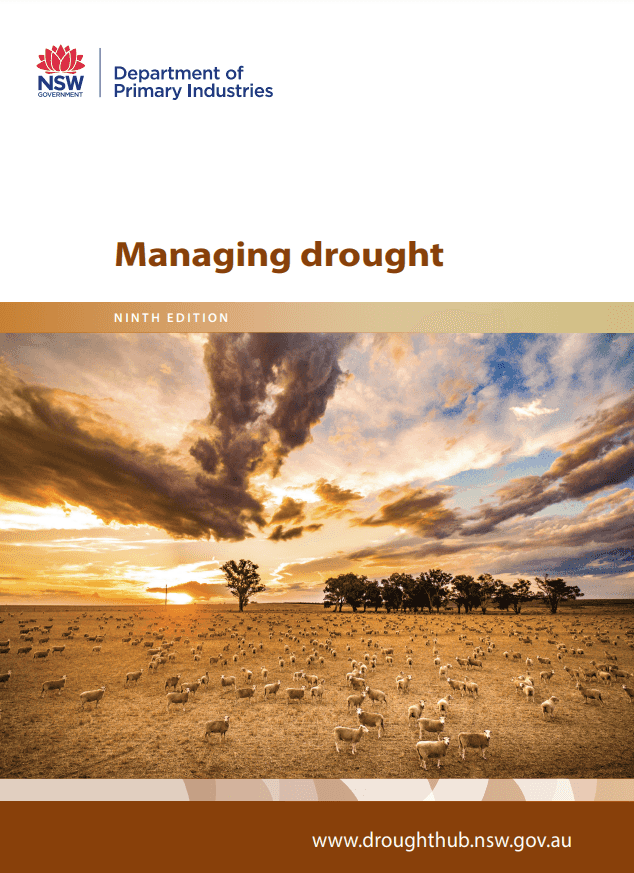
The NSW Managing Drought Guide has been prepared to give primary producers relevant information to help them make informed decisions on how to effectively manage the impacts of the current drought, as well as future extended dry spells.
The challenge of managing drought has been something generations of farmers have had to face, and the impacts of drought reach well beyond the farm gate.
This guide reflects the unique pressures placed on producers before, during and after drought and includes strategies and actions that farmers can consider as they deal with its effects on their businesses.
It also includes information on relevant resources from the NSW Department of Primary Industries (DPI) and Local Land Services, practical information on feeding livestock, farm management and sustainable practices, as well as personal and financial wellbeing.
Access the publication here.
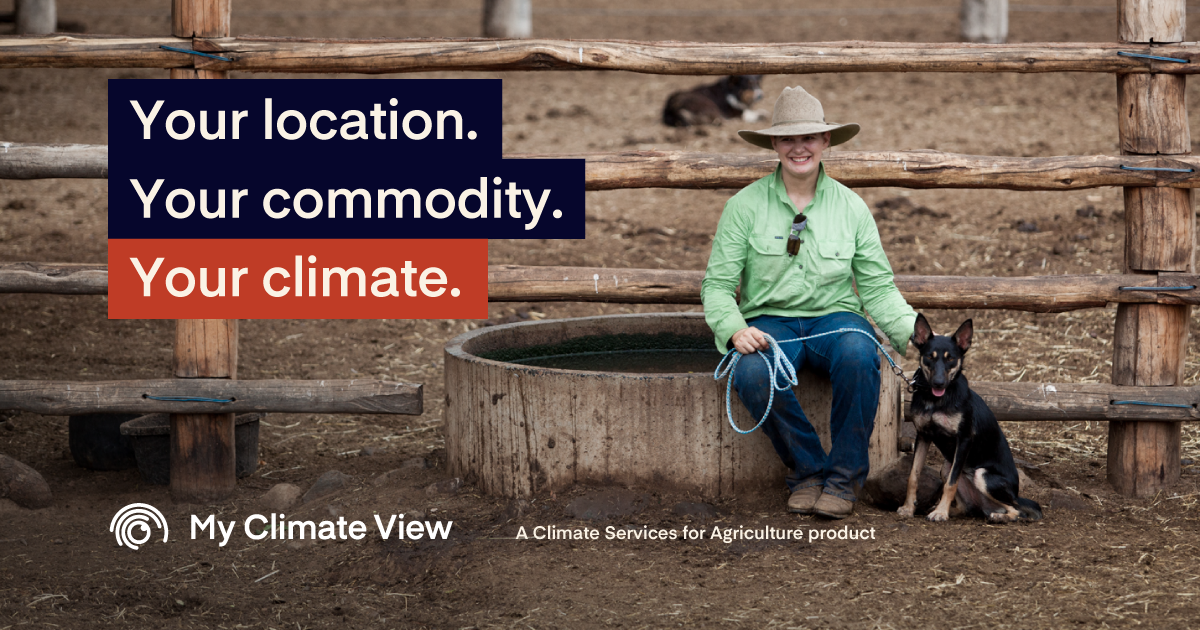
The Climate Services for Agriculture (CSA) program has a new name and website for its farmer-focused climate information tool.
My Climate View is a free online climate information tool helping farmers understand what the future climate might mean for their location, down to a 5km2 resolution, to inform decision-making and build climate resilience.
It presents agriculturally relevant historical and future climate information in one place so farmers can explore climate trends for specific commodities at a local scale.
Along with the new name and website, other updates to the My Climate View tool include the addition of climate information for avocados, cherries and chickpeas, significant improvements to how users can access and view their local and commodity-specific climate information, and insight into how climate information is calculated.
Use it here: www.myclimateview.com.au
CSA is a collaboration between CSIRO and the Bureau of Meteorology and part of the Future Drought Fund’s investment in better climate information for Australia’s agriculture sector.

On 24 June 2024, the Drought Resilience Self-Assessment Tool (DR.SAT) will be decommissioned.
In line with recommendations from the recent Productivity Commission Inquiry Report into the effectiveness of the Future Drought Fund (FDF), the Australian Government has made the decision to decommission DR.SAT.
DR.SAT was funded under the Better Climate Information theme of the FDF, alongside the Climate Services for Agriculture (CSA) program. The Productivity Commission found similarities between the two tools, including the provision of historical climate data and projections at the farm scale.
On 26 October 2023, the Australian Government announced $17.7 million from the FDF to action key recommendations from the Productivity Commission Inquiry. This included short term funding to continue the CSA program while considering future offerings. Part of this work will include investigating elements of DR.SAT that could be incorporated into the CSA platform – My Climate View. The investigation will commence over the coming months, for more information visit Climate Services for Agriculture.
Where else can I find more information?
You can visit My Climate View at myclimateview.com.au, which provides farmers and farm advisors with future climate projections for specific commodities at a local scale, right across Australia.
Free access to high quality soil information for best practice management
The Soil Quality Knowledge Base has been developed for farmers, agricultural industry professionals, policymakers, students and the community to provide free access to high quality, evidence-based information on current soil knowledge and soil management.
Explore information and insights on soil properties, processes and testing across a range of industries and regions – with a focus on Western Australian and Australian agriculture.
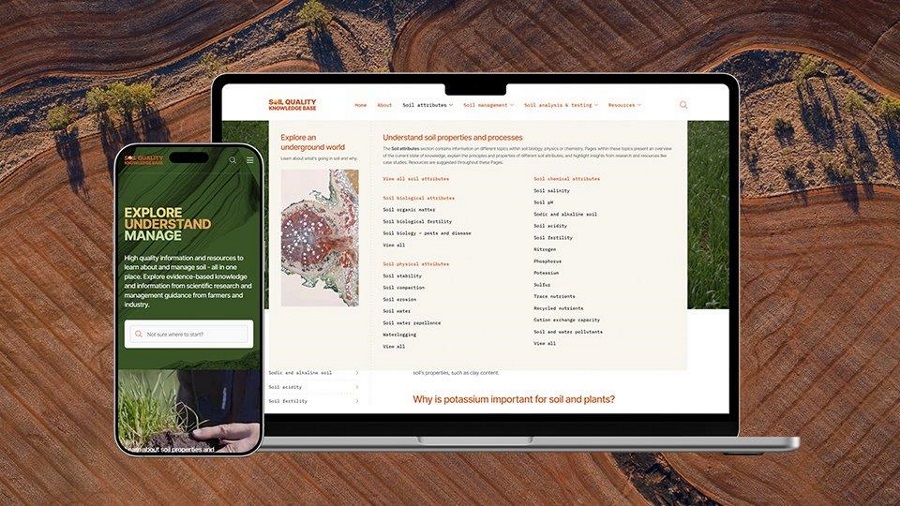

DR.SAT updated to help more farmers and growers
The Future Drought Fund’s Drought Resilience Self-Assessment Tool (DR.SAT) has been updated with new functionality after consultation across Australia’s agricultural regions.
Improvements to the free tool include easier farm boundary mapping, access to practical examples of tried and tested drought resilience strategies to help tailor your own farm business solutions without needing to log into the tool, and environmental resilience content that covers more commodities and regions.
Access commodity and region coverage maps here: https://bit.ly/3BkGoz0
DR.SAT users can access:
- Farm-specific satellite imagery and remote sensing data covering past and current landscape conditions. The latest updates include ‘vegetation cover’ (fractional cover) data and 3D terrain view modelling.
- Climate projections for their farm for 2030 and 2050.
- Self-assessments for whole-of-farm strategic planning, including environmental, financial, and personal and social signals.
- Links to more resources to help prepare for and adapt to a more volatile climate.
Assess your farm’s resilience at: drsat.com.au
Want to help shape the future of the tool? Register now to take part in focus groups in early 2023: help@drsat.com.au

CSA updated to help more farmers
A free online tool giving farmers crucial climate information for their region has been updated following consultation across 8 agricultural regions.
Climate Services for Agriculture (CSA) helps farmers find out what the future climate is likely to look like in their region and what it might mean for what they produce.
The new, updated CSA platform now includes information about extreme years, 14 of Australia’s top agricultural commodities, historical climate data, seasonal forecasts and projected future climate information.
New commodities include cotton, dairy, orange, sorghum, sugarcane and wine grapes. This is in addition to existing commodities of beef, sheep, wheat, almonds, apples, barley, canola, lupins.
The new ‘Extreme Years’ widget helps users compare past climate extremes with potential futures ones and set thresholds for their business.
Data accessibility has also been improved to make it easier for users to find and interpret the information they’re looking for.
The tool is a collaboration between the Bureau of Meteorology and CSIRO and is funded through the Australian Government’s Future Drought Fund.
The platform will be progressively enhanced to June 2024 to include more commodities, agricultural insights, and adaptation opportunities.
See the potential impact of climate variability on your farm at: climateservicesforag.indraweb.io
Help improve the tool, share your feedback with developers now: csaenquiries@csiro.au

NSW Managing Drought Guide (ninth edition, July 2019)
The NSW Managing Drought Guide has been prepared to give primary producers relevant information to help them make informed decisions on how to effectively manage the impacts of the current drought, as well as future extended dry spells.
The challenge of managing drought has been something generations of farmers have had to face, and the impacts of drought reach well beyond the farm gate.
This guide reflects the unique pressures placed on producers before, during and after drought and includes strategies and actions that farmers can consider as they deal with its effects on their businesses.
It also includes information on relevant resources from the NSW Department of Primary Industries (DPI) and Local Land Services, practical information on feeding livestock, farm management and sustainable practices, as well as personal and financial wellbeing.
Access the publication here.
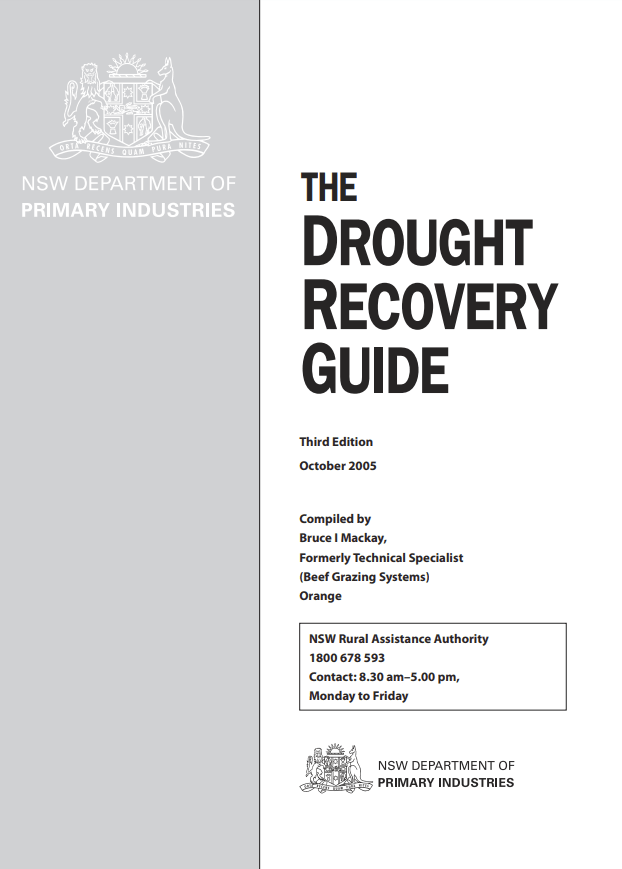
The Drought Recovery Guide (third edition, October 2005)
The Drought Recovery Guide has been prepared by the NSW Department of Primary Industries to assist producers in drought recovery strategies and in making other important management decisions.
Severe drought has a significant long-term impact on livestock numbers, including breeding stock. The cropping sector may also be significantly affected. As a result, farmers have to make difficult financial and management decisions as they prepare to move into drought recovery.
The Drought recovery guide includes a range of important information about restocking, cropping and the protection of plant and animal health. This information is designed to help producers who are moving into drought recovery, as well as those who hope to do so in the near future.
Access the publication here.

GRDC ‘Dealing with the dry’ webpage
This Grains Research and Development Corporation (GRDC) page provides easy access to useful information on agronomy in dry times and tips for planning and being prepared when it does rain.
There are also resources for farm business, including tips for retaining staff in dry times and debt management strategies, including advice on how to prepare for difficult conversations with your bank manager.
Watch the videos from the GRDC Dealing with the Dry forum series. These forums were initiated to bring practical, relevant information to growers in drought-affected regions of New South Wales and Queensland.
Access the GRDC ‘Dealing with the dry’ webpage here.

MLA Drought management webpage
On this page, you can find a range of guides and information collated by MLA to assist livestock producers as they head into, manage through and plan to recover from drought.
Access MLA’s recently collated tools and resources for building business resilience during dry times.
Access the MLA Drought management webpage here.
